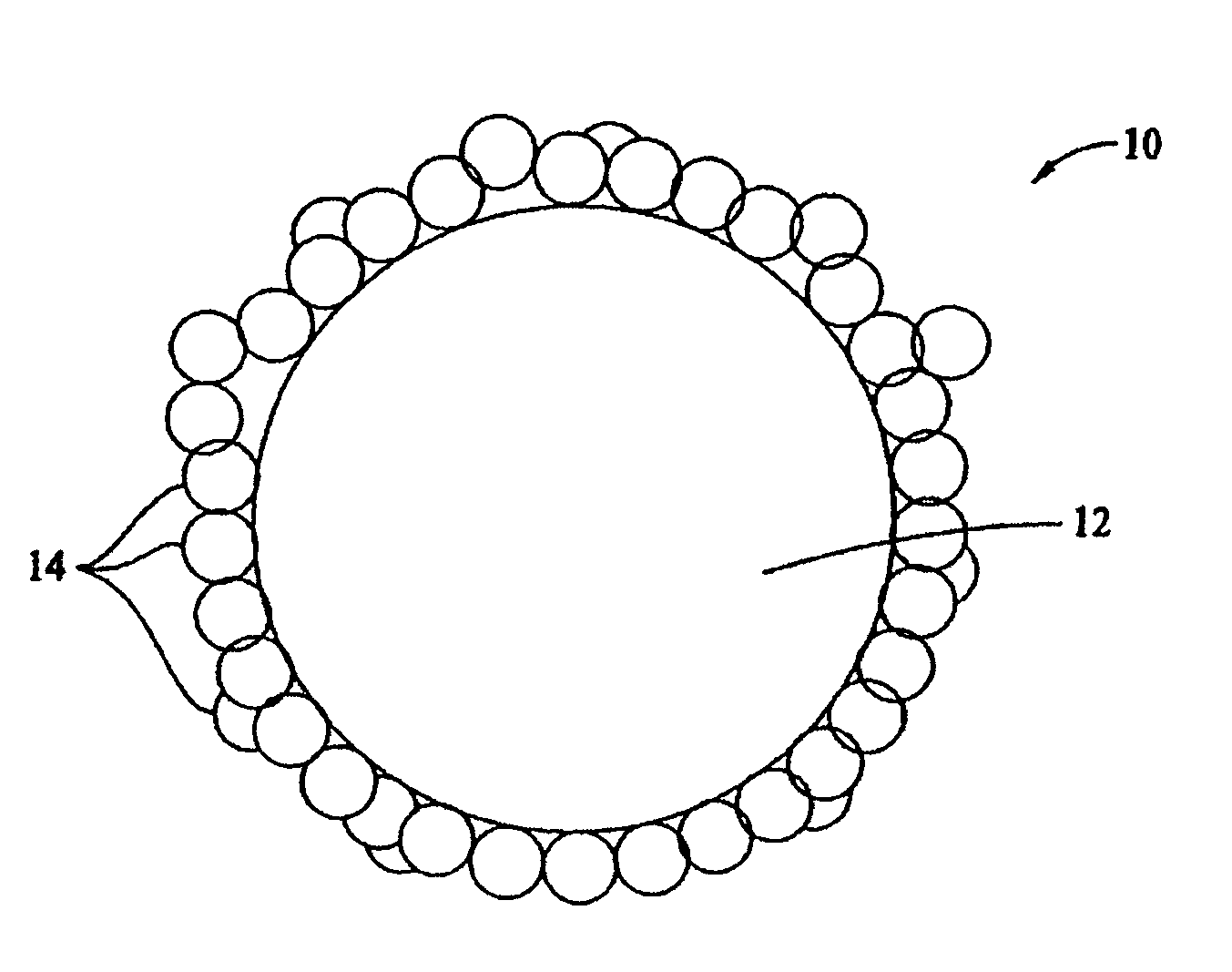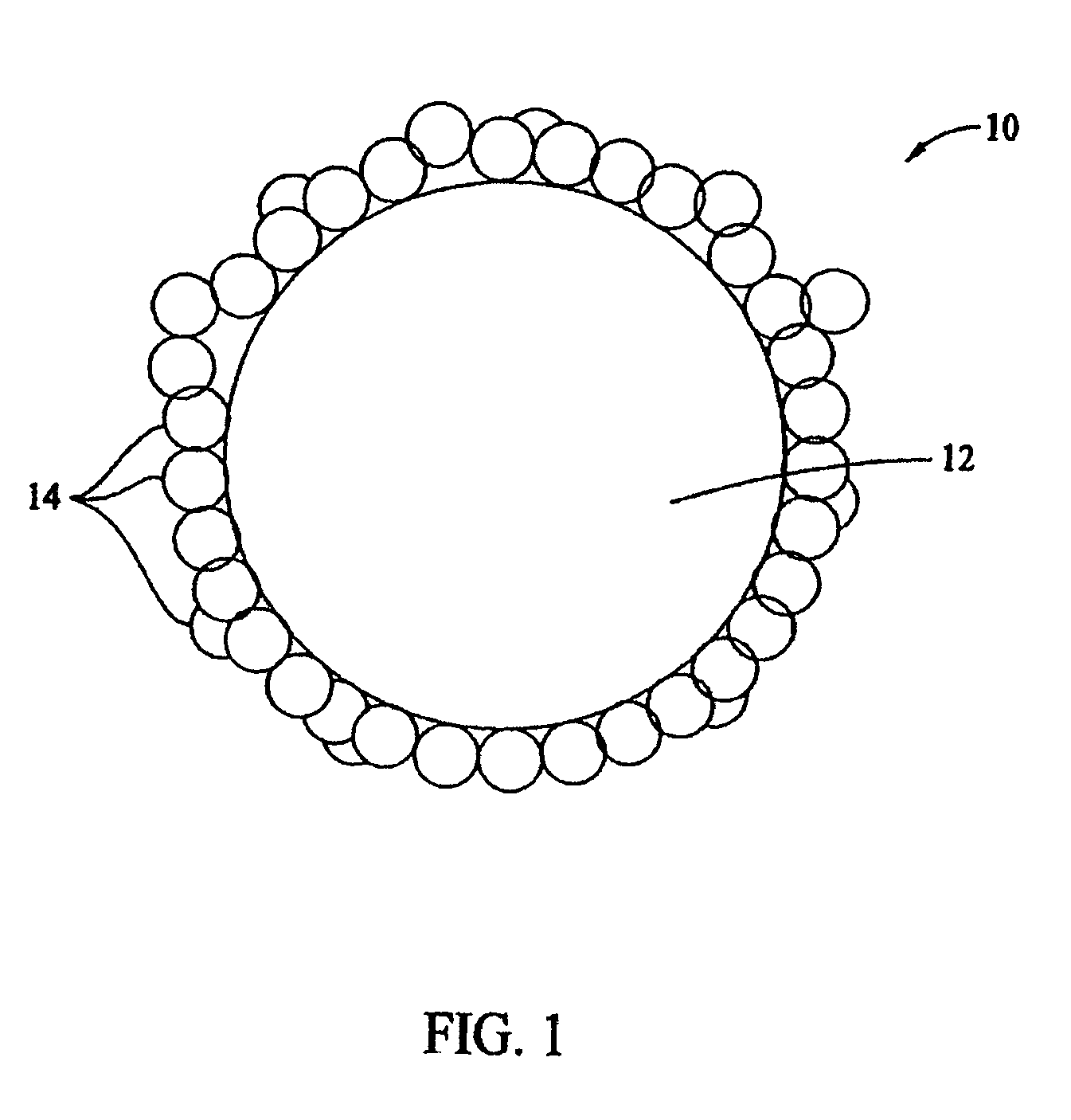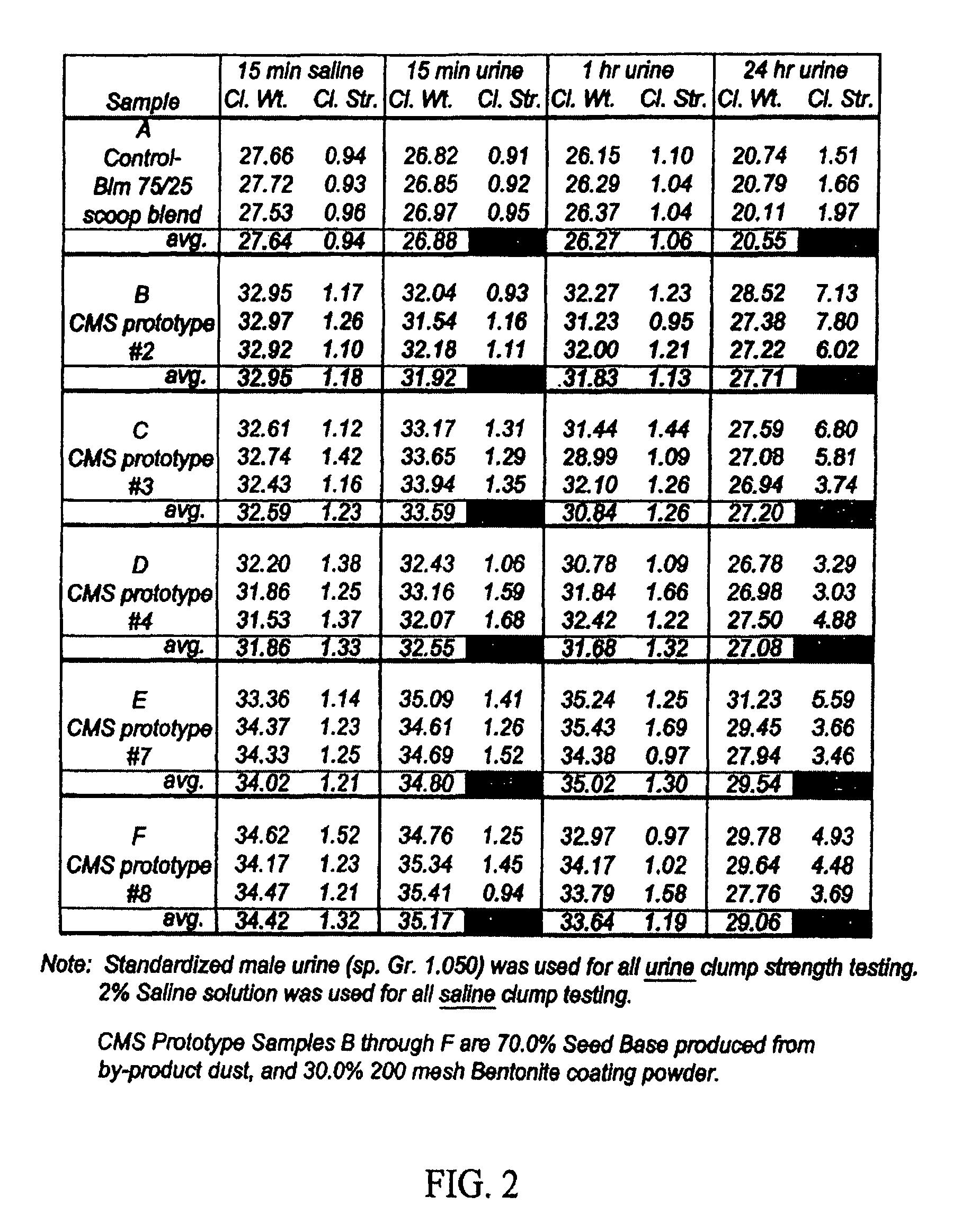Coated clumping litter
a litter and clumping technology, applied in the field of absorbent materials, can solve the problems of clay fines, large amount of dust being produced, and litters prone to producing dus
- Summary
- Abstract
- Description
- Claims
- Application Information
AI Technical Summary
Benefits of technology
Problems solved by technology
Method used
Image
Examples
Embodiment Construction
[0014]Referring to FIG. 1, absorbent particles 10 include clay fines agglomerated into clay particles 12, which are coated with a powder 14. In one embodiment, absorbent particles 10 are utilized in an animal litter. In alternative embodiments, the animal litter includes cat, dog, hamster and livestock litter. The clay fines used in the agglomeration process are about −50 mesh in size and are sometimes referred to as a clay seed base or a seed material. In an exemplary embodiment, clay particles 12 range in size from about −10 mesh to about +50 mesh, based on standard U.S. mesh.
[0015]In an exemplary embodiment, the clay fines are agglomerated using a pin mixer. A powder 14 is applied to particles 12 to form a coating. Powder 14 is the active ingredient of the litter. Exemplary coating powders include at least one of a sodium bentonite powder and a bentonite / guar gum blended powder. However, the powder coatings may be augmented with either or both of an odor control agent and an anti...
PUM
| Property | Measurement | Unit |
|---|---|---|
| weight | aaaaa | aaaaa |
| size | aaaaa | aaaaa |
| sizes | aaaaa | aaaaa |
Abstract
Description
Claims
Application Information
 Login to View More
Login to View More - R&D
- Intellectual Property
- Life Sciences
- Materials
- Tech Scout
- Unparalleled Data Quality
- Higher Quality Content
- 60% Fewer Hallucinations
Browse by: Latest US Patents, China's latest patents, Technical Efficacy Thesaurus, Application Domain, Technology Topic, Popular Technical Reports.
© 2025 PatSnap. All rights reserved.Legal|Privacy policy|Modern Slavery Act Transparency Statement|Sitemap|About US| Contact US: help@patsnap.com



